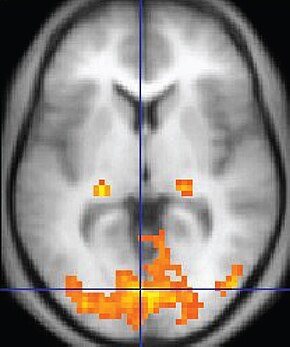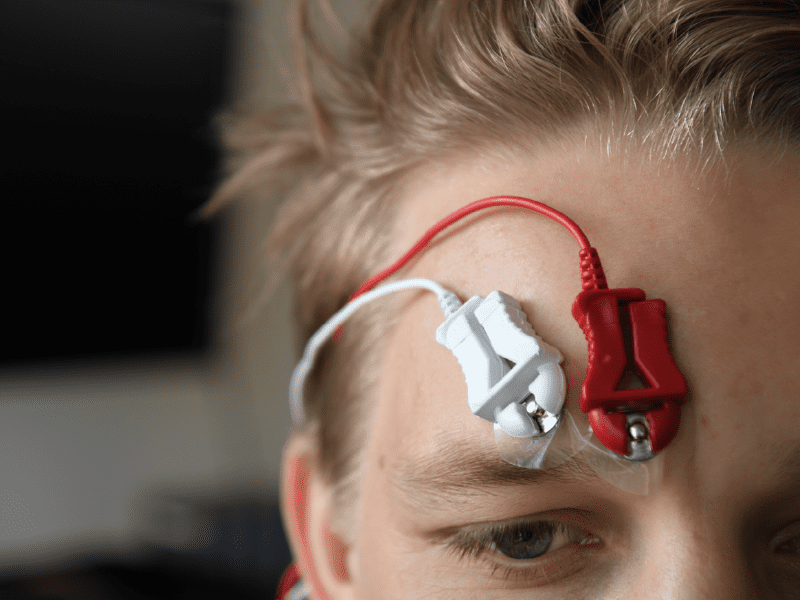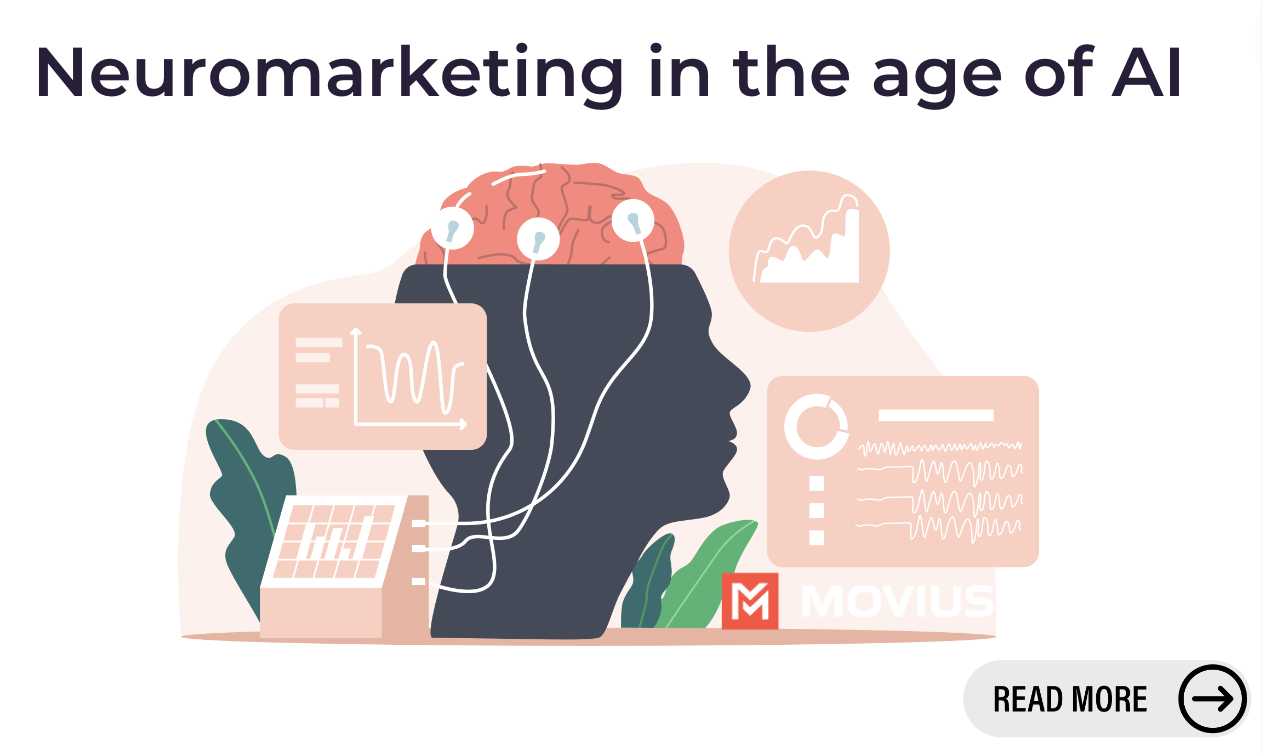In recent years, artificial intelligence (AI) is transforming the way businesses operate and connect with their customers. One field that has benefited greatly from this technology is neuromarketing, which is the study of consumer behavior and decision-making through the lens of neuroscience. With the help of AI, businesses gather vast amounts of data on their customers’ preferences and behavior they can use to create highly targeted and effective marketing campaigns.
In this article, we’ll explore the ways in which AI and neuromarketing intersect and how businesses can leverage this technology to gain a deeper understanding of their customers and create more engaging and effective marketing strategies. We will delve into the latest research, discuss real-world examples, and provide actionable insights for businesses looking to leverage the power of neuromarketing in the age of AI.
About neuromarketing and AI
Marketing is a process that involves decision-making between the seller and the buyer. Neuromarketing, a combination of the words “neuroscience” and “marketing” is a developing area of marketing research. It aims to help marketers understand what triggers a buyer’s “buy-button” using neuroscience.
It’s a discipline combining insights from marketing science, economics, and psychology to develop theories that illustrate the impact of marketing on target customer behavior. Neuromarketing methods reveal hidden information in consumers, without requiring them to explicitly share their thoughts, feelings, memories, assumptions, or decision-making strategies. Neuromarketing is contributing to the development of new marketing theories or supplementing existing ones in marketing and related fields. Neuroscientists use many specialized tools such as brain scanners, facial expression recognition, and eye tracking to gather information about what could be happening in the brain.
Brief history of neuromarketing
Dr. David Lewis-Hodgeson, chairman of Mindlab was an early neuromarketing researcher in the late 1980s and has authored many books on the topic, including best seller Impulse – Why We Do What We Do Without Knowing Why We Do It (2013).
One of early examples neuromarketing research was a brain imaging study by Gerry Zaltman of Harvard University in the late 1990s. He is recognized for his development of the Zaltman Metaphor Elicitation Technique (ZMET), which is a qualitative method to uncover emotions impacting consumer preferences.
Although the foundational research occurred prior, Ale Schmidts is actually credited with coming up with the term “neuromarketing”.
BrightHouse Neurostrategies Group, based in Atlanta, GA, is a research firm that’s worked on projects for Coca-Cola, Delta Airlines, and Home Depot. They use fMRI scanning while a subject is shown images or video clips. fMRI is a technology which shows different areas of the brain “lighting up” based on blood flow to the area.
Roger Dooley is a popular author on the topic of neuromarketing. His book Brainfluence (2011) was one of the first popular books on the subject.

The role of AI in neuromarketing
AI can quickly search through vast amounts of information to find patterns. In today’s digital age, we leave behind personal information through our online activities like social media, online shopping, memberships, and more. This information is stored in the cloud and can be accessed by AI programs. Some services can scan the internet and reveal our publicly available personal information. Journalists and bloggers who use these services are often surprised by the extent of the information they find. This information helps model consumer’s preferences, allowing for personalization and more effective advertising campaigns. AI helps marketers understand more information about the conditions before, during, and after a purchasing moment. Marketing is now the 4th largest use case (by resources spent) and 6th largest industrial adopter of AI technology, with 2.55 percent of the overall industry invested in AI.
AI also plays a direct role in the technology used for facial expression recognition and emotion detection. Convolutional Neural Networks (CNNs) are at the heart of computer vision innovations. AI-driven facial tracking technologies empower researchers with more efficient and accurate methods for understanding and interpreting emotions. They provide valuable insights into how individuals respond emotionally to content, enabling businesses, marketers, and content creators to design more impactful and engaging experiences.
“We’re currently witnessing a merger between Big Data, NeuroMarketing and anthropology generating highly advanced consumer insight, which in some occasions are able to predict 95% of what the consumer is likely to do before he or she is even aware of it!”
Martin Lindstrom
An OCEAN of marketing knowledge
Prince Ghuman, a neuromarketer, spoke at TEDxHultLondon on the topic of Neuromarketing and the Future of A.I. Driven Behavior Design. Among other headline stories, he talked about how researchers use OCEAN (also known as the Big 5), an acronym referring to a set of core personality traits, as a way to predict responses to certain advertisements. The five traits are openness, conscientiousness, extraversion, agreeableness, and neuroticism.
He highlighted that OCEAN analysis is based on psychology’s understanding of personality and is considered the most valid form of personality analysis available today. By analyzing an individual’s OCEAN profile, marketers can gain insights into their preferences, tendencies, and potential outcomes in various situations. Furthermore, combining AI with OCEAN analysis can lead to the creation of highly persuasive marketing messages tailored to an individual’s personality. This level of personalization allows marketers to target their audience more effectively and increase the effectiveness of their campaigns.
Controversially, an example of this in action was Cambridge Analytica, who used OCEAN analysis to target political ads to people using social media. Many raised the alarm on whether people are properly aware that their political opinions were being shaped by the data they provided to social media companies, and whether affecting people in this way was ethical, or a form of election interferance.
Using neuroscience to sell chocolate
There has been much research done into emotions and eating, as they are highly interconnected. For example consider “comfort food”, a phenomenon where people use food to feel better when stressed or tired. Carbohydrates are known to increase serotonin, which is why they’re often so prevalent in such foods. Or think of the fact that our celebrations often involve food. There are sometimes cultural and familial ties with food. Food often will be associated with memories and experiences. Research into emotion and food has resulted in many established questionnaires and research methods.
In How Neuromarketing, Artificial Intelligence and Machine Learning can improve Technology Companies and their Marketing Strategy, Panavou Fotini-Rafailia of International Hellenic University describes her thesis where she researched using facial recognition and Facial Electromyography (fEMG) research to examine the effect of emotions (specifically happiness, sadness, anger, and surprise) on the audience’s intention to buy chocolate. The facial recognition results were also compared with self-reported data.
About Facial Recognition
Facial recognition refers to computer applications that can identify a person’s face within an image. Facial recognition often includes three components:
(1) Face Detection – the app is able to find a face within an image
(2) Feature Extraction – the app can detect specific areas of the face, such as eyes and mouth, and potentially detect facial expressions
(3) Face Recognition – the app can identify specific faces
People are now aware of facial recognition because of social media apps, which can detect a certain social media user and automatically tag them in an image, and from applications that use the face for authentication purposes, where users can log in with their face instead of a traditional password.

About Facial Electromyography (fEMG)
fEMG is a technique that measures electrical activity generated by facial muscles as they contract. fEMG has advantages in that it is an objective measurement, non-invasive, it can be conducted in real-time, and it can integrate with other physiological measures. It also has disadvantages in that it is fairly difficult and complex to interpret the data, the electrodes on the face can be uncomfortable for the participants, and only a few muscles can be reasonably tracked at a time.

Results
In Fotini-Rafailia’s research, she examined the response of the audience to four digital advertising campaigns: New Galaxy, Booja Booja, M&S, and Green & Black. Each campaign was distinct, showcasing different messages and imagery.
- New Galaxy’s ad campaign told the story of an everyday woman and used energy, movement, bright colors and movement.
- Comparitively, Booja Booja took a different approach, showing the production of truffles in the factory and a manager that tells the story of truffles.
She concluded that high levels of happiness and other emotions while watching the New Galaxy ad was highly correlated with intent to buy. The research picked up on both happiness and surprise in the Booja Booja campaign. She found that storytelling and vivid colors influenced the audience’s emotions the most, and this resulted in a higher intent to buy for that audience.
“95% of purchase decisions are made by the subconscious.”
Gerald Zaltman, Harvard Professor Emeritas
Practical and ethical considerations
In Week 4 of Coursera’s Introduction to Neuroeconomics course, Doctor Hilke Plassmann gives cautionary advice concerning neuromarketing. The applications of neuroscience to business depends on the specific questions a company has. If a company just wants to know how they are perceived or whether they are trendy, surveys may be more cost effective than an fMRI study. Neuroscientific tools specifically help better understanding the “why” behind consumer responses. For example, using eye-tracking technology to determine what elements of a campaign attracted attention.
With regard to ethical concerns, first there are privacy concerns. People may not know what they’re really signing up for when they consent to share their personal data for marketing purposes. Secondly, there are concerns about convincing people to purchase things they don’t want. The purpose of marketing isn’t to create needs, but satisfying existing ones. It’s important to consider how we are addressing these concerns as we use neuromarketing and AI, because we all want to live in a world where we feel respected and make decisions that are good for us.
“Neuromarketing is as ethical as marketing in general. One can have truthful ads and ads that are false or misleading. One can have ads that increase awareness of legitimate products and ads that promote dangerous products to children. It’s not the tool that determines ethics, it’s the way it is used and the intent of the marketer.”
Roger Dooley
I hope that this article helped you understand neuromarketing and AI. To learn more about the AI services Movius offers, please visit https://new2024.movius.ai/ai-products/.





